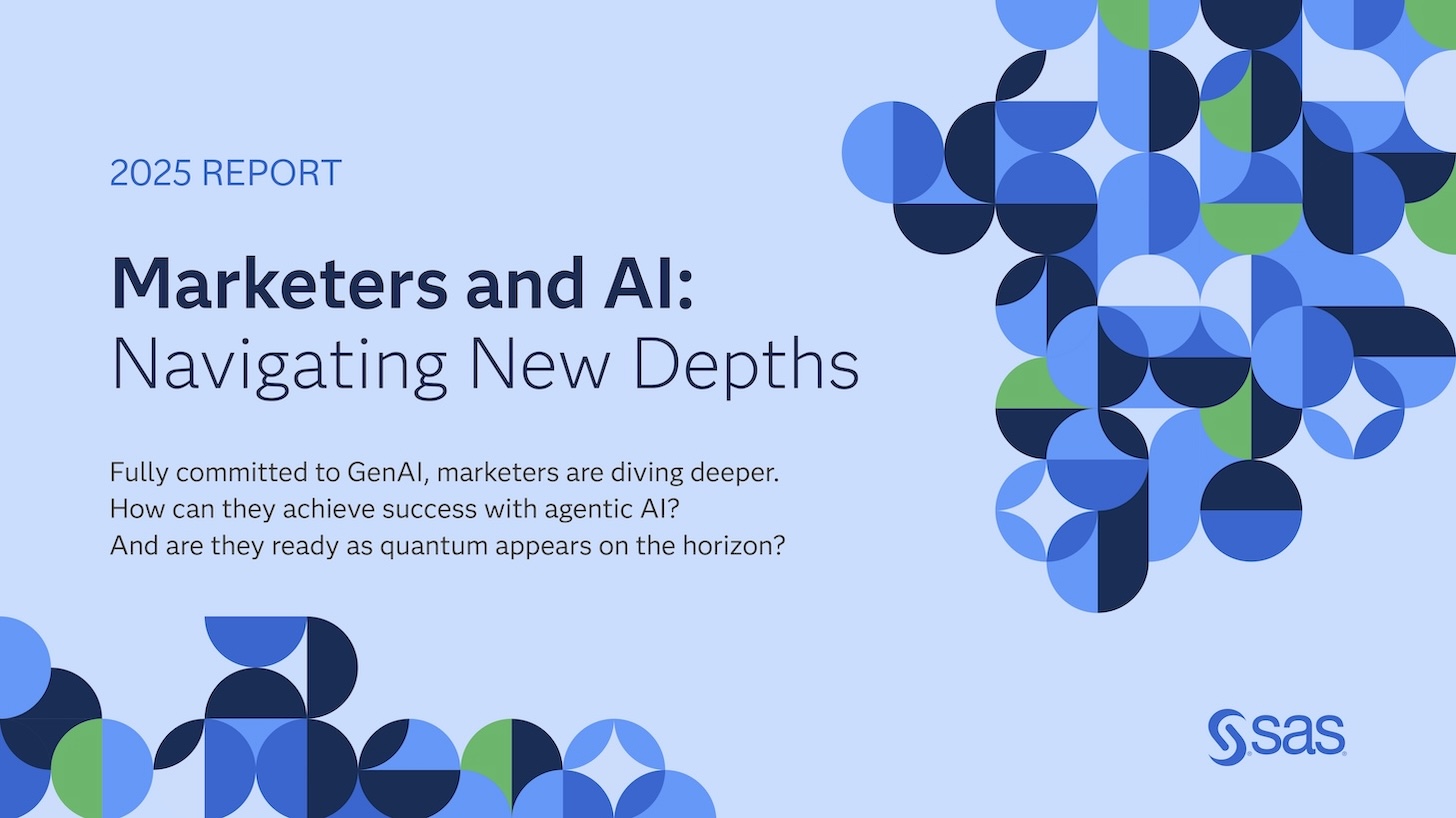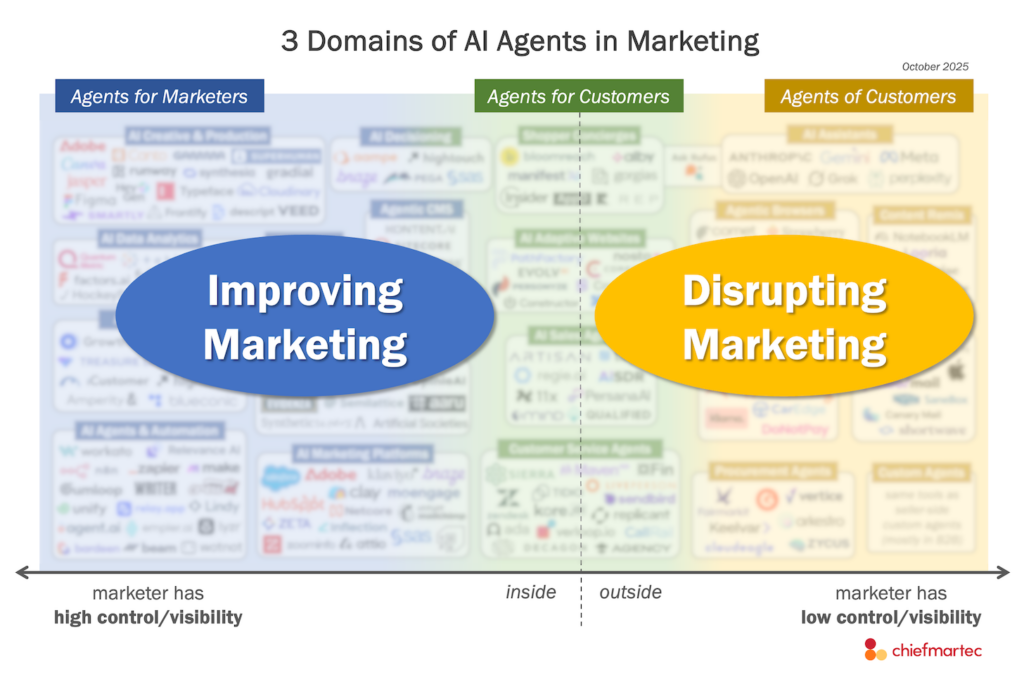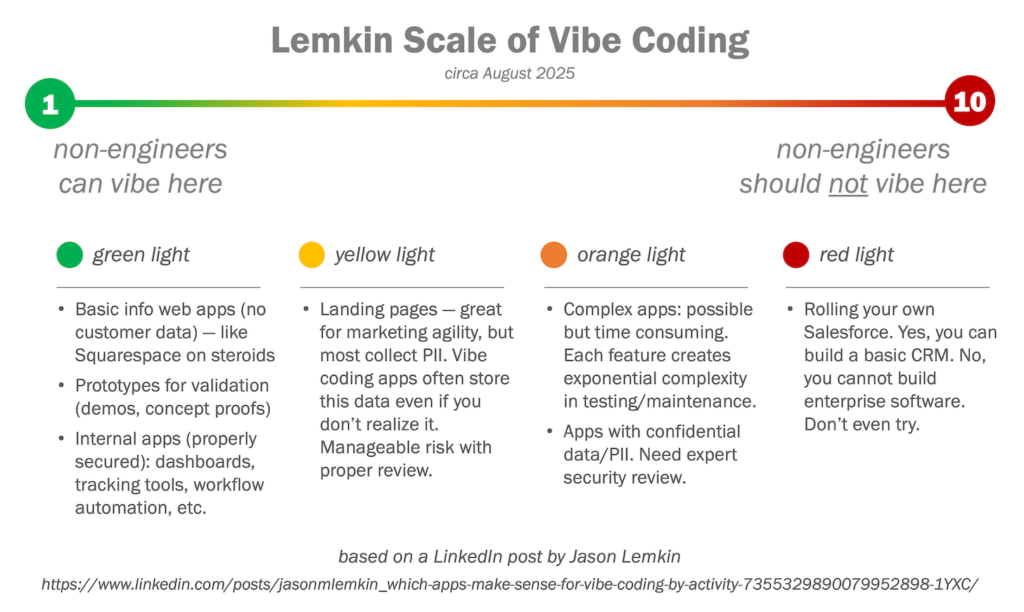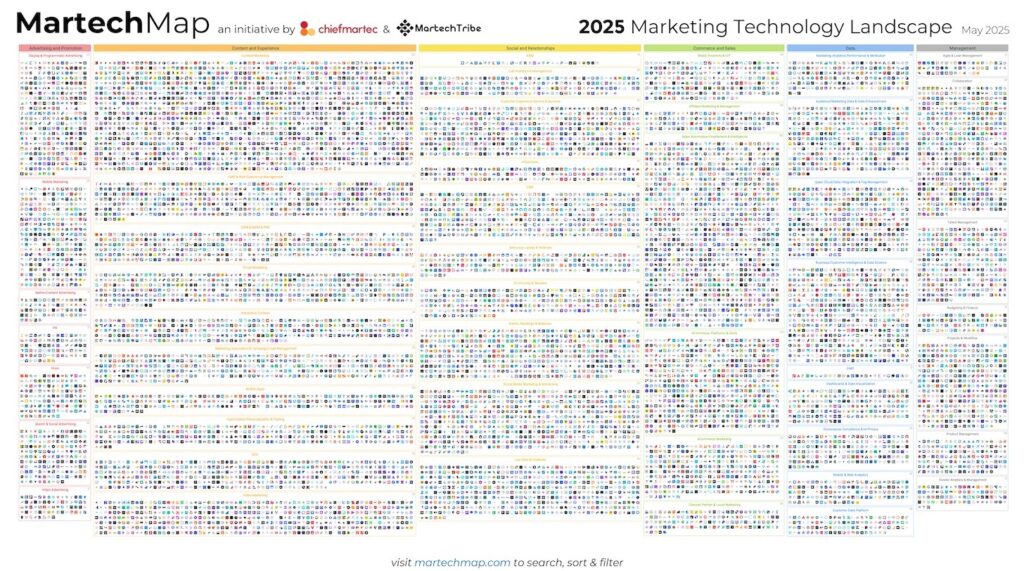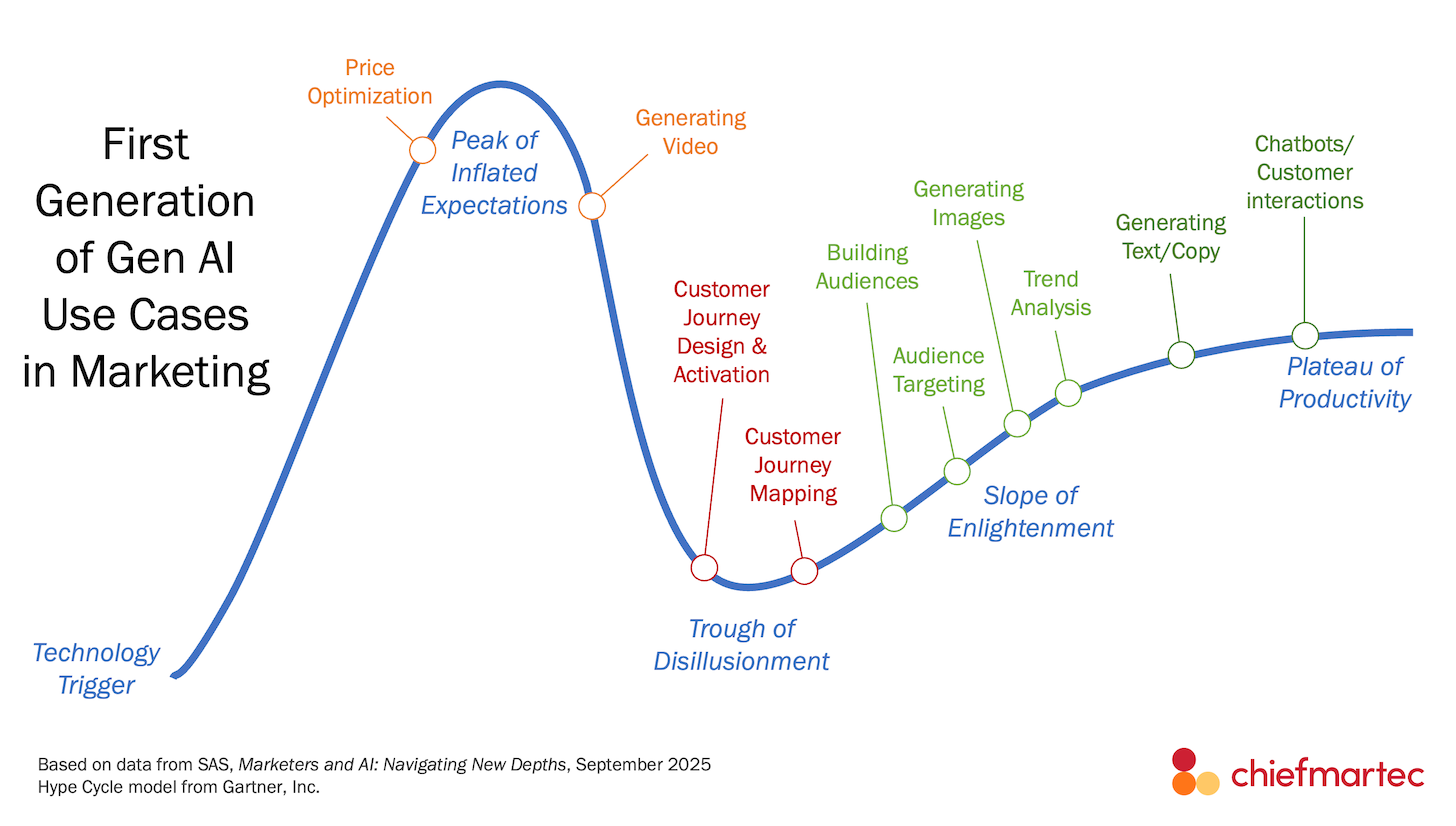
Ah, the Hype Cycle. No other curve is both so revered and reviled.
When it comes to generative AI’s Hype Cycle, especially its application in marketing, there are three things we need to acknowledge:
First, “gen AI” is not a single technology moving along the Hype Cycle. Is it at the peak of inflated expectations? The trough of disillusionment? The slope of enlightenment?
The answer is: all of the above. Different gen AI applications and use cases are at different stages along this roller coaster track.
Second, many of these generative AI applications and use cases are in their first generation. Our expectations for a great AI-powered chatbot today are modest compared to what we’ll expect of them in 2 years, 5 years, 10 years.
For instance, today, a good customer service chatbot can provide accurate answers to relatively straightforward questions. Future generations of these customer serivce AI agents may handle much more complex scenarios, may have more agency to take actions on a customer’s behalf, may autonomously engage in cross-sell and upsell motions, etc.
Each of those generations will likely follow its own Hype Cycle of inflated expectations, disillusionment, and enlightenment. We can be at the Plateau of Productivity for today’s chatbots, while facing the start of a fresh overhyped Hype Cycle for the next generation’s capabilities.
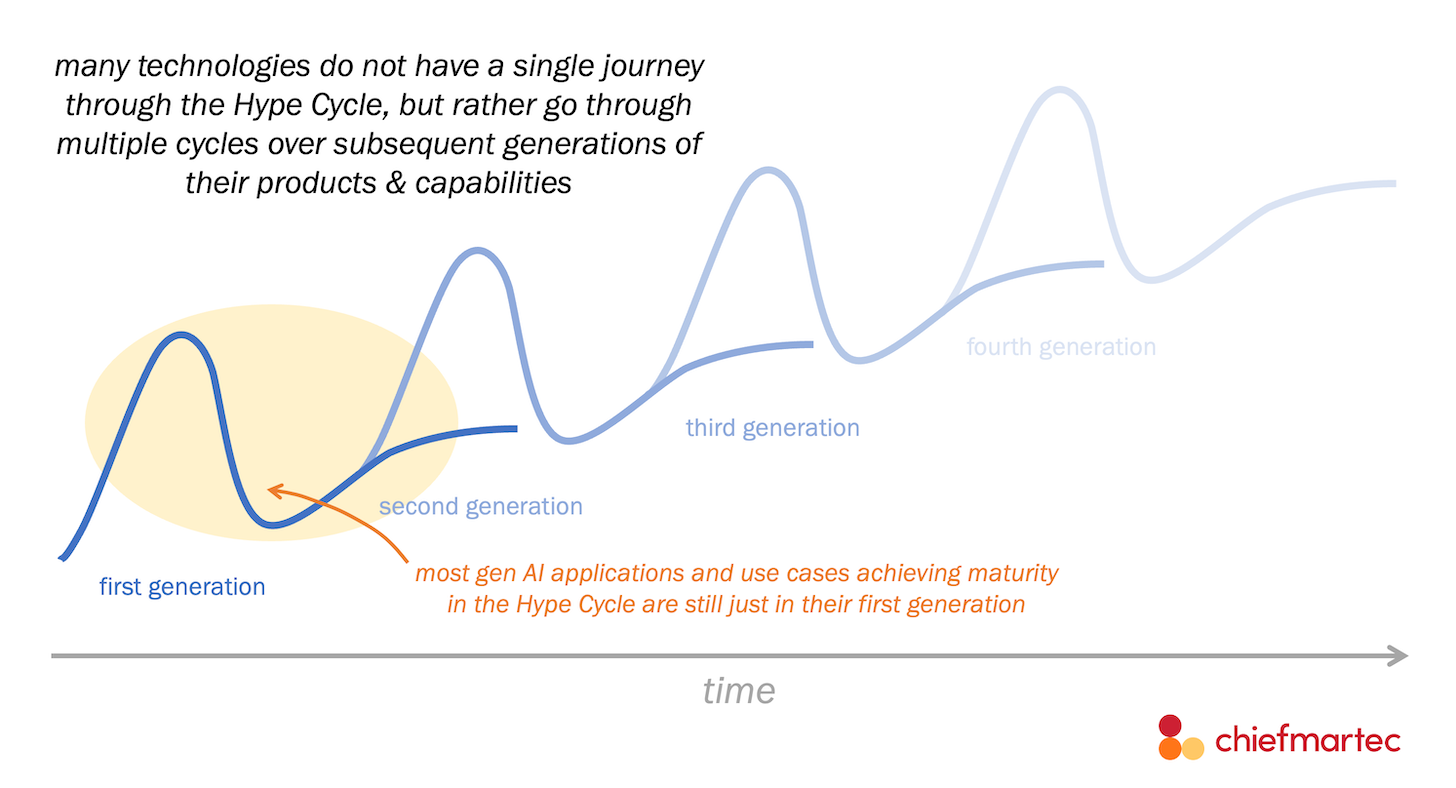
Visualizing multiple generations of a technology, each on their own Hype Cycle journey, lets us hold two opposing stages of the cycle in our mind at the same time (the test of a first-rate intelligence according to F. Scott Fitzgerald). AI agent chatbots can be simultaneously in the Plateau of Productivity and the Peak of Inflated Expectations.
Or more accurately, “a” plateau and “a” peak — each one of many over time.
Third, the speed at which AI applications are rocketing through the Hype Cycle is unprecedented. What used to be a decade-long journey from trigger to plateau now happens in a couple years. Before one generation is plateaued, we’re already off to the races with the next generation’s cycle.
I know you feel this acceleration in the pit of your stomach. Trust me, we all do.
But a new report released by SAS this week — Marketers and AI: Navigating New Depths — gives us some empirical data on the maturation rate of gen AI use cases in marketing.
I found this chart the most interesting, comparing adoption vs. planning of 10 different gen AI applications in marketing from 2024 to 2025 (n=300 for both years):
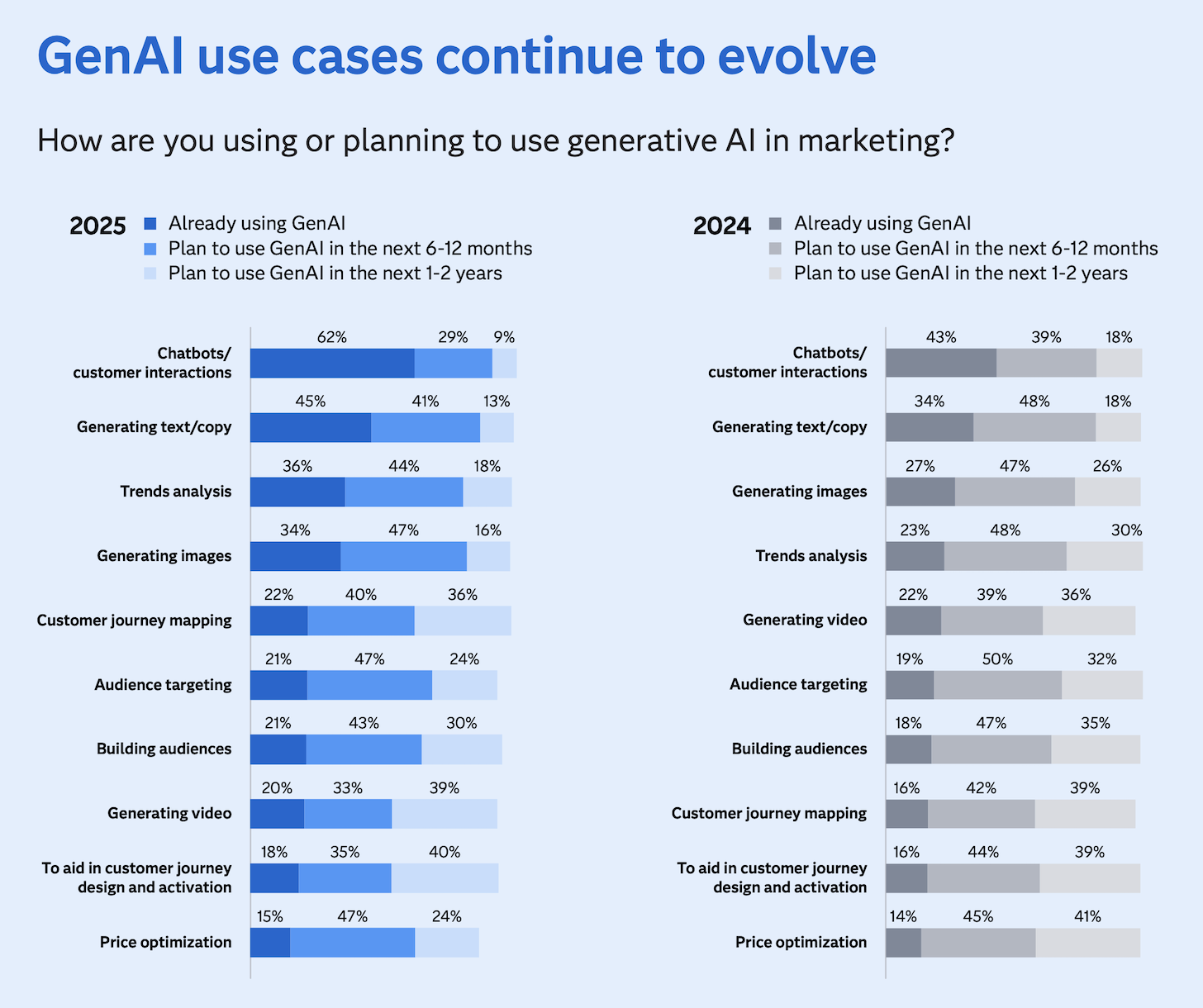
The 12-month acceleration in adoption of several of these is impressive:
- Trends analysis: +56.5%
- Chatbots/customer interactions: +44.2%
- Generating text/copy: +32.4%
Those three most accelerated use cases are also the three most adopted ones too, albeit in a slightly different order:
- Chatbots/customer interactions: 62%
- Generating text/copy: 45%
- Trends analysis: 36%
However, there were also a couple of use cases that reversed direction over this past year, showing a reduction in adoption:
- Generating video: -9.1%
- Customer journey mapping: -4.3%
These stats make it possible — albeit with a little hand waving — to map where on the Hype Cycle each of these use cases currently sits. The most adopted? They’re in a Plateau of Productivity. The ones losing adoption, especially after much fanfare a year ago? In a Trough of Disillusionment.
The image at the top of this post is my approximation of a Hype Cycle map for these use cases — at least in their first generation. Let me emphasize their first-generation-ness.
Also, to be crystal clear, Gartner didn’t make this map. They might be horrified by my use (abuse?) of their model. The placement of these gen AI use cases are my own estimates, based on the data from this new SAS report, as well as a collection of anecdotes I’ve heard from across the martech community.
Here’s a summary of my rationale for where I placed these use cases:
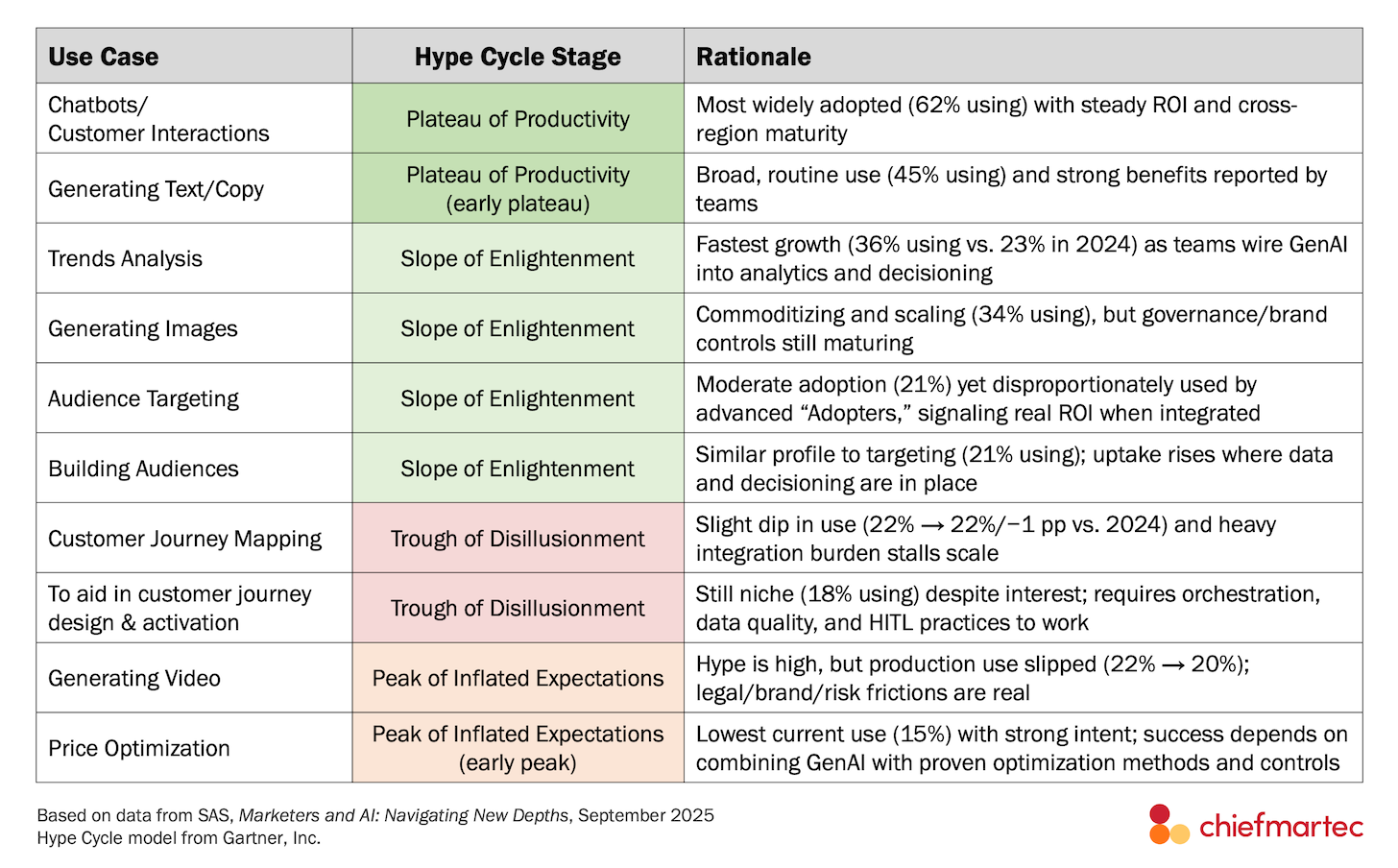
There’s plenty more data and insights in the full SAS report — including some fascinating stats on the early considerations of quantum computing in marketing. (In case you were worried we might run out of massively disruptive and transformative technologies for us to absorb in the years ahead.)
Isn’t it an exhilirating time to be in marketing and martech?
